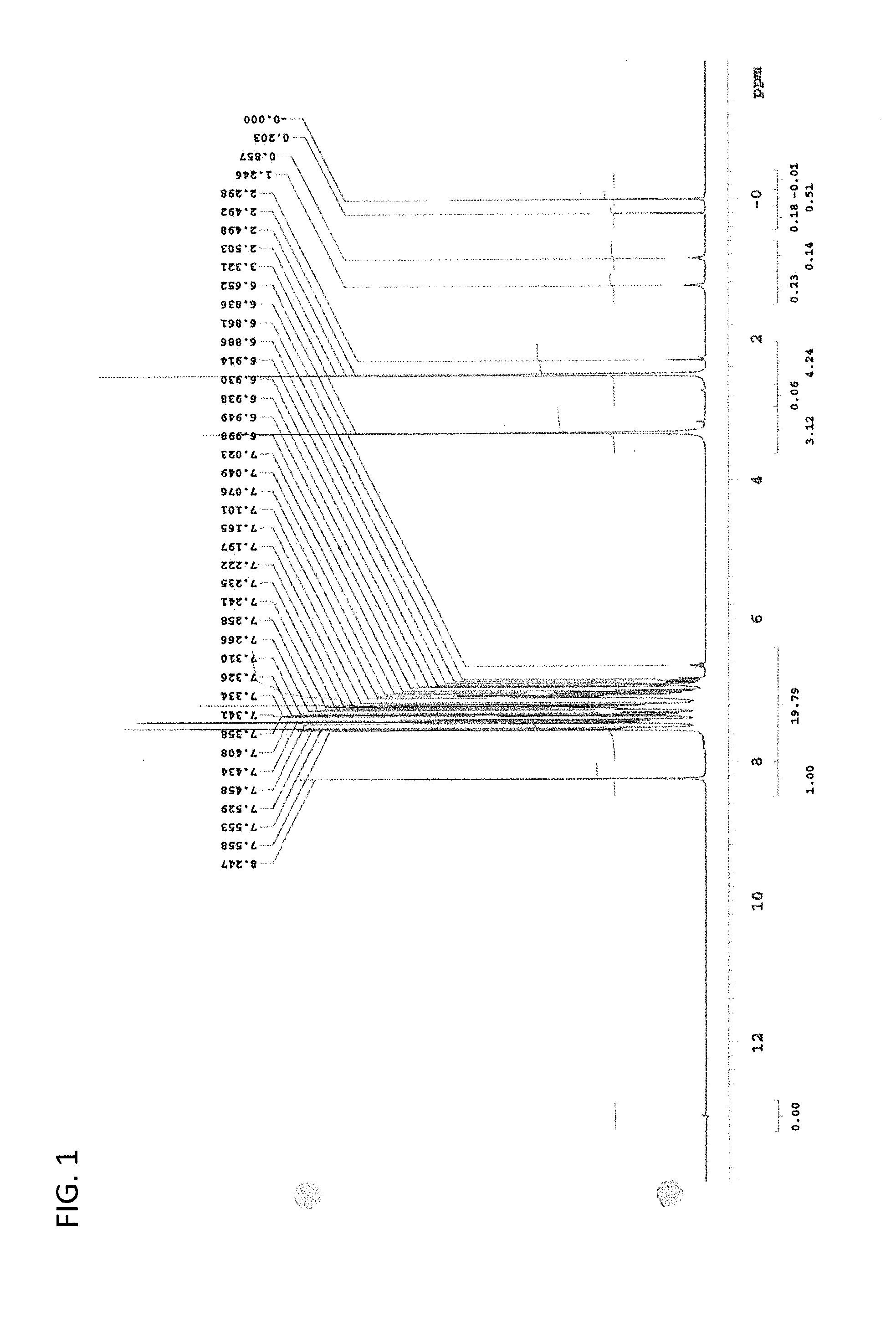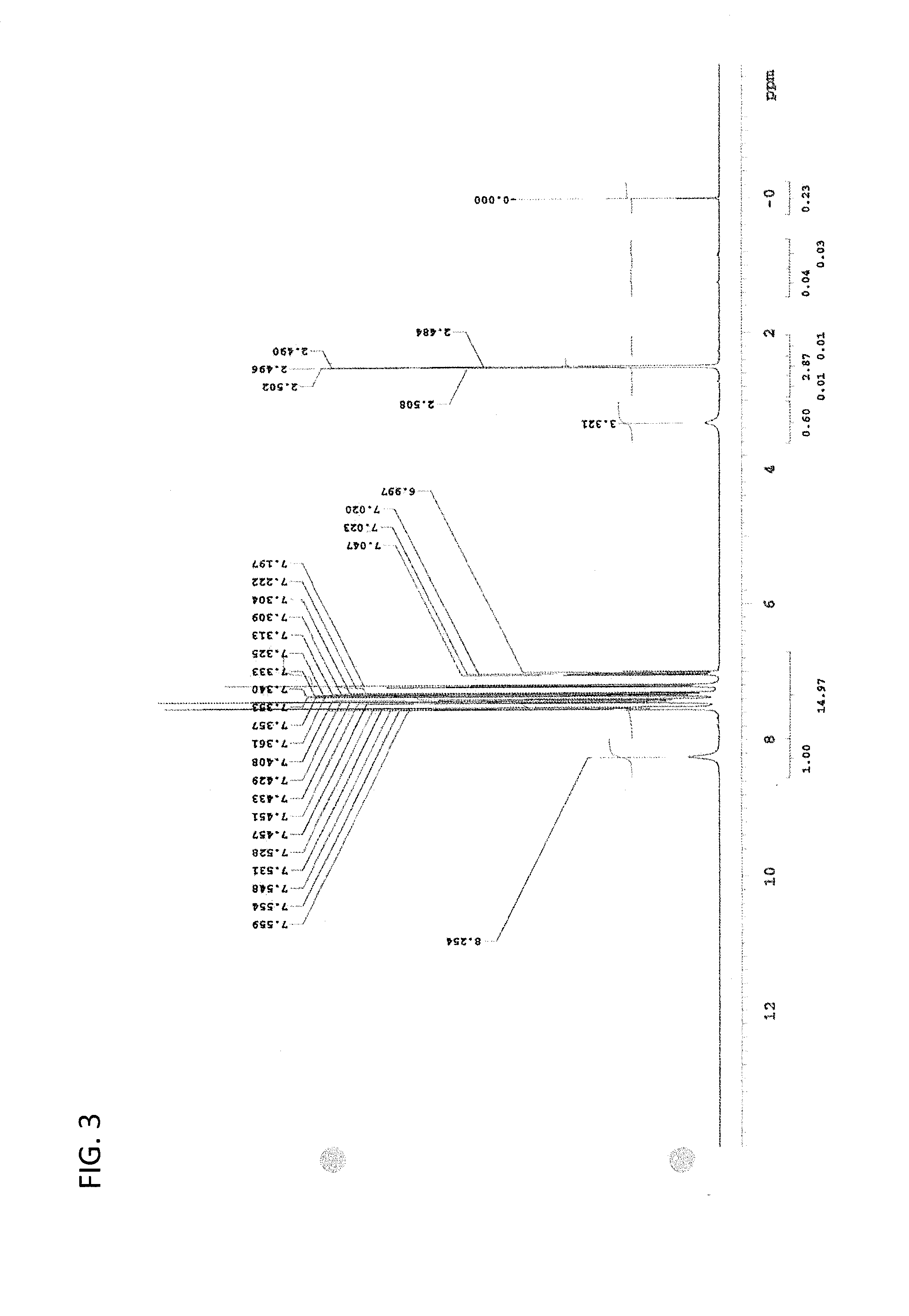Method for manufacturing optically active menthol
a technology of optically active menthol and manufacturing method, which is applied in the preparation of isomerisation, physical/chemical process catalysts, metal/metal-oxide/metal-hydroxide catalysts, etc., can solve the problem of synthesis of 1-menthol from inexpensive achiral raw materials, and achieves high selectivity, high chemical purity and optical purity. , the effect of simple and easy operation
- Summary
- Abstract
- Description
- Claims
- Application Information
AI Technical Summary
Benefits of technology
Problems solved by technology
Method used
Image
Examples
synthesis example 1
Synthesis of (R)-proline-N-ethyl carbamate methyl ester
[0411]
[0412]The synthesis was conducted according to the synthesis process described in Tetrahedron, Vol. 49, No. 23, 5127-5132.
[0413]In a 2 L four-necked flask were added 35.54 g (0.3 mol) of (R)-proline, 600 mL of anhydrous methanol, and 41.46 g of potassium carbonate, followed by stirring. Under ice cooling, 71.62 g (0.66 mmol) of ethyl chlorocarbonate was added dropwise to the reaction mixture at 25° C. or less and the resulting mixture was stirred at 0° C. for 12 hours. Then, the methanol was distilled off and 300 mL of water was added in the residue. The mixture was extracted with 450 mL of chloroform. Then, the aqueous layer was extracted twice with 450 mL of chloroform. The organic layer thus obtained was washed with saturated saline, dried over anhydrous magnesium sulfate, and filtered. Then, the solvent was distilled off to obtain 52.85 g of the intended product in a yield of 87.5%.
synthesis example 2
Synthesis of (S)-proline-N-ethyl carbamate methyl ester
[0414]
[0415]The synthesis was conducted according to the synthesis process described in Tetrahedron, Vol. 49, No. 23, 5127-5132.
[0416]In a 1 L four-necked flask were added 23.03 g (0.2 mol) of (S)-proline, 400 mL of anhydrous methanol, and 27.64 g of potassium carbonate, followed by stirring. Under ice cooling, 47.75 g (0.44 mmol) of ethyl chlorocarbonate was added dropwise to the reaction mixture at 25° C. or less and the resulting mixture was stirred at 0° C. for 12 hours. Then, the methanol was distilled off and 200 mL of water was added in the residue. The resulting mixture was extracted with 300 mL of chloroform. Then, the aqueous layer was extracted twice with 300 mL of chloroform. The organic layer thus obtained was washed with saturated saline, dried over anhydrous magnesium sulfate, and filtered. Then, the solvent was distilled off to obtain 35.85 g of the intended product in a yield of 89.1%.
synthesis example 3
Synthesis of (R)-2-(bis-(4′-t-butylphenyl)methyl)pyrrolidine (Synthesis of Optically Active Cyclic Nitrogen-Containing Compounds of Examples 1 to 6)
[0417]
[0418]The synthesis was conducted according to the synthesis process of (S)-2-(diphenylmethyl)pyrrolidine described in Tetrahedron: Asymmetry, Vol. 8, No. 1, 149-153.
[0419]In a 1-L reaction flask purged with nitrogen were added 12.55 g (469 mmol) of magnesium and 50 mL of anhydrous THF in a nitrogen gas stream and the resulting mixture was stirred. At room temperature, a THF (500 mL) solution of 100 g (469 mmol) of 4-t-butylphenylbromobenzene was added dropwise to the reaction mixture, followed by stirring at room temperature for one hour (synthesis of a Grignard compound).
[0420]Next, the reaction mixture thus obtained was cooled to 5° C. or less and a THF (200 mL) solution of 47.2 g (235 mmol) of (R)-Proline-N-ethyl carbamate methyl ester obtained in Synthesis Example 1 was added dropwise at 10° C. or less to cause a reaction ther...
PUM
| Property | Measurement | Unit |
|---|---|---|
| Fraction | aaaaa | aaaaa |
| Fraction | aaaaa | aaaaa |
| Fraction | aaaaa | aaaaa |
Abstract
Description
Claims
Application Information
 Login to View More
Login to View More - R&D
- Intellectual Property
- Life Sciences
- Materials
- Tech Scout
- Unparalleled Data Quality
- Higher Quality Content
- 60% Fewer Hallucinations
Browse by: Latest US Patents, China's latest patents, Technical Efficacy Thesaurus, Application Domain, Technology Topic, Popular Technical Reports.
© 2025 PatSnap. All rights reserved.Legal|Privacy policy|Modern Slavery Act Transparency Statement|Sitemap|About US| Contact US: help@patsnap.com



